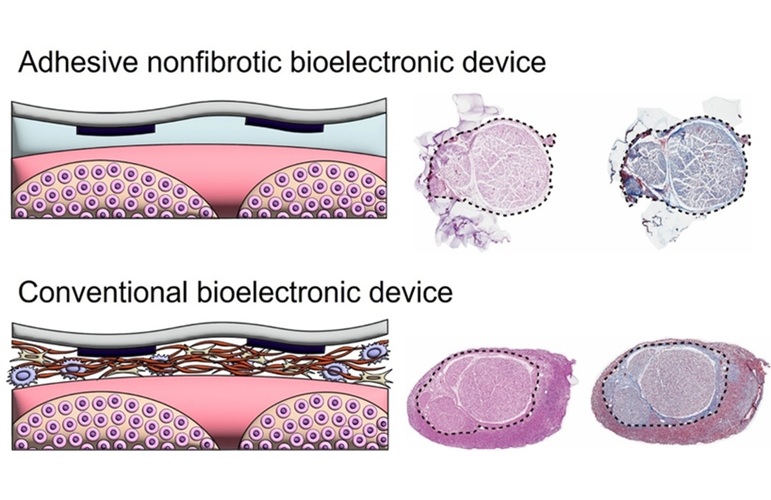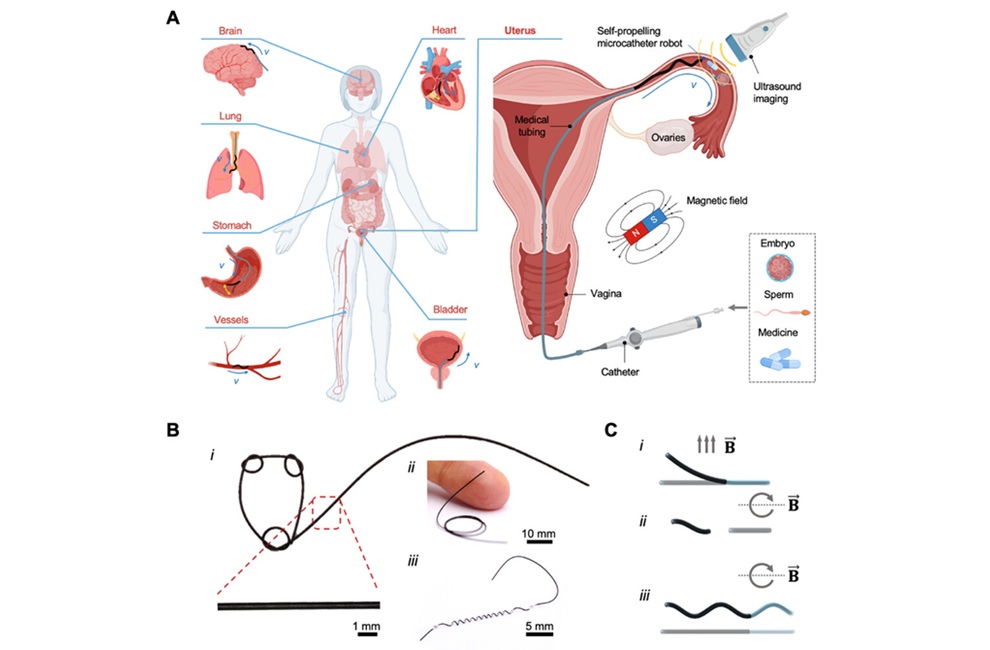Noninvasive, Continuous Hemoglobin Monitoring Helps Clinicians Better Manage Perioperative Bleeding
|
By HospiMedica International staff writers Posted on 21 Mar 2023 |

The European Society of Anesthesiology and Intensive Care (ESAIC, Brussels, Belgium) has updated its guidelines for perioperative blood management that emphasize the significance of noninvasive, continuous hemoglobin (Hb) monitoring in helping clinicians manage perioperative bleeding. Referencing studies using technologies such as Masimo SpHb from Masimo (Irvine, CA, USA), the guidelines note that “the use of noninvasive Hb-monitoring methods may be a practical approach to monitor[ing] the Hb concentration continuously and without accumulating additional blood losses.”
The ESAIC which revisits its perioperative blood management guidelines once every five years has published its updated findings based on its systematic review of research published from 2015 to 2021. Noting that managing bleeding during surgery is complex and “involves multiple assessment tools and strategies to ensure optimal patient care,” the guidelines cover various modalities, disciplines, scenarios, and patient populations – including how noninvasive, continuous hemoglobin monitoring can significantly improve blood management.
The ESAIC’s updated guidelines point to a major drawback in using blood gas analyzers and invasive blood sampling to measure hemoglobin during surgery: “single measurements taken at different time points may not depict accurate values.” They also note that excess blood sampling can result in iatrogenic blood loss and hospital-acquired anemia. Noninvasive hemoglobin monitoring cannot replace invasive blood sampling, but provides a “practical approach to monitor[ing] the Hb concentration continuously and without accumulating additional blood losses.” The guidelines also note its importance “for trend analysis and to monitor changes in addition to laboratory-measured Hb concentrations during the intervals between invasive blood sampling and Hb measurements.” The guidelines continue, “Having access to continuous measurements of Hb concentrations offers timely detection of changes in Hb concentrations and adjustment, if necessary, in the clinical setting.” Additionally, the guidelines note that when severe bleeding and volume shifts are expected or occurring, “continuous noninvasive hemoglobin monitoring may be considered for trend analyses and for reducing blood sampling for invasive laboratory measurement of hemoglobin concentration, especially in children.”
The Masimo SpHb uses multiple wavelengths of light to continuously monitor changes in the hemoglobin trend between invasive blood samples in real-time. This advanced technology has proven beneficial in patient blood management programs, enhancing outcomes in both high- and low-blood loss surgeries such as decreasing the number of patients requiring allogeneic transfusions, reducing the total units of red blood cells transfused per patient, and decreasing the time to transfusion, reducing costs, and lowering patient mortality within 30 and 90 days after surgery by 33% and 29%, respectively when combined with a goal-directed fluid therapy algorithm using Masimo PVi.
“Noninvasive hemoglobin measurements now represent standard of care in many clinical scenarios,” said Professor Kai Zacharowski, past President of ESAIC and senior author of the guidelines. “With their inclusion in the latest perioperative bleeding guidelines, we hope that more anesthesiologists around the world incorporate this technology into their daily practice to help improve overall patient blood management.”
“With laboratory measurements, and even with bedside point-of-care hemoglobin testing, results are intermittent, sampling errors can occur, and performing these tests can be distracting during complex cases and while caring for critically ill patients,” added Dr. William C. Wilson, Chief Medical Officer, Masimo. “SpHb monitoring provides real-time visibility to hemoglobin levels throughout the continuum of care and has the advantages of trend analysis as well as reductions in workload and delay, enabling clinicians to adjust blood management and observe results simultaneously.”
Latest Surgical Techniques News
- Minimally Invasive Surgery Proven Safe and Effective for Complex ‘Whipple’ Procedure
- Catheter-Based Procedures Offer Less Invasive Option for Treatment of Valvular Disease
- Laparoscopic Surgery Improves Outcomes for Severe Newborn Liver Disease
- Novel Endoscopy Technique Provides Access to Deep Lung Tumors
- New Study Findings Could Halve Number of Stent Procedures
- Breakthrough Surgical Device Redefines Hip Arthroscopy
- Automated System Enables Real-Time "Molecular Pathology" During Cancer Surgery
- Groundbreaking Procedure Combines New Treatments for Liver Tumors
- Ablation Reduces Stroke Risk Associated with Atrial Fibrillation
- Optical Tracking Method Identifies Target Areas in Robot-Assisted Neurosurgery
- General Anesthesia Improves Post-Surgery Outcomes for Acute Stroke Patients
- Drug-Coated Balloons Can Replace Stents Even in Larger Coronary Arteries
- Magnetic Kidney Stone Retrieval Device Outperforms Ureteroscopic Laser Lithotripsy
- Absorbable Skull Device Could Replace Traditional Metal Implants Used After Brain Surgery
- Magic Silicone Liquid Powered Robots Perform MIS in Narrow Cavities
- 'Lab-on-a-Scalpel' Provides Real-Time Surgical Insights for POC Diagnostics in OR
Channels
Critical Care
view channel
Soft Robots Could Donate Their Heart to Humans
Heart failure is a growing global health burden, and existing artificial hearts and mechanical pumps often fall short of long-term clinical needs. Many current devices rely on rigid components and complex... Read more
Bioadhesive Strategy Prevents Fibrosis Around Device Implants on Peripheral Nerves
Peripheral nerves connect the brain and spinal cord to muscles, organs, and sensory systems, making them key targets for treating neurological and systemic diseases. However, implantable bioelectronic... Read morePatient Care
view channel
Revolutionary Automatic IV-Line Flushing Device to Enhance Infusion Care
More than 80% of in-hospital patients receive intravenous (IV) therapy. Every dose of IV medicine delivered in a small volume (<250 mL) infusion bag should be followed by subsequent flushing to ensure... Read more
VR Training Tool Combats Contamination of Portable Medical Equipment
Healthcare-associated infections (HAIs) impact one in every 31 patients, cause nearly 100,000 deaths each year, and cost USD 28.4 billion in direct medical expenses. Notably, up to 75% of these infections... Read more
Portable Biosensor Platform to Reduce Hospital-Acquired Infections
Approximately 4 million patients in the European Union acquire healthcare-associated infections (HAIs) or nosocomial infections each year, with around 37,000 deaths directly resulting from these infections,... Read moreFirst-Of-Its-Kind Portable Germicidal Light Technology Disinfects High-Touch Clinical Surfaces in Seconds
Reducing healthcare-acquired infections (HAIs) remains a pressing issue within global healthcare systems. In the United States alone, 1.7 million patients contract HAIs annually, leading to approximately... Read moreHealth IT
view channel
EMR-Based Tool Predicts Graft Failure After Kidney Transplant
Kidney transplantation offers patients with end-stage kidney disease longer survival and better quality of life than dialysis, yet graft failure remains a major challenge. Although a successful transplant... Read more
Printable Molecule-Selective Nanoparticles Enable Mass Production of Wearable Biosensors
The future of medicine is likely to focus on the personalization of healthcare—understanding exactly what an individual requires and delivering the appropriate combination of nutrients, metabolites, and... Read moreBusiness
view channel
Philips and Masimo Partner to Advance Patient Monitoring Measurement Technologies
Royal Philips (Amsterdam, Netherlands) and Masimo (Irvine, California, USA) have renewed their multi-year strategic collaboration, combining Philips’ expertise in patient monitoring with Masimo’s noninvasive... Read more
B. Braun Acquires Digital Microsurgery Company True Digital Surgery
The high-end microsurgery market in neurosurgery, spine, and ENT is undergoing a significant transformation. Traditional analog microscopes are giving way to digital exoscopes, which provide improved visualization,... Read more
CMEF 2025 to Promote Holistic and High-Quality Development of Medical and Health Industry
The 92nd China International Medical Equipment Fair (CMEF 2025) Autumn Exhibition is scheduled to be held from September 26 to 29 at the China Import and Export Fair Complex (Canton Fair Complex) in Guangzhou.... Read more















